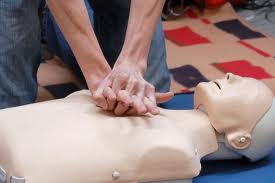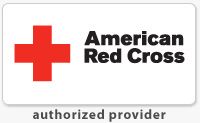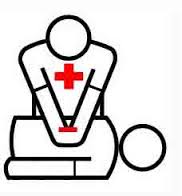What is CPR?
CPR stands for cardiopulmonary resuscitation. It is typically performed as a combination of chest  compressions and breaths. (Note, there is also an abbreviated, less effective version of CPR that is performed without breathing into the victim, called “compression-only CPR” or “hands-only CPR.” You’ll find information about that here.)
compressions and breaths. (Note, there is also an abbreviated, less effective version of CPR that is performed without breathing into the victim, called “compression-only CPR” or “hands-only CPR.” You’ll find information about that here.)
What CPR does not generally do is restart the heart of someone who is in cardiac arrest. That is the role of an automated external defibrillator (AED). What CPR does do, however, is buy the victim of cardiac arrest some additional time until an AED is ready to be used.
CPR must be performed on a hard, flat service. By pressing the breastbone downward toward the backbone, the heart is squeezed, circulating blood throughout the body. In traditional CPR, a combination of compressions and ventilations (known as “rescue breaths”) provides the entire body — but especially the vital organs, such as the brain, the heart and the lungs — with oxygenated (or oxygen-rich) blood.
Learning how to recognize an emergency, how to activate the EMS (emergency medical services) system by calling 911, how to perform CPR and how to operate an AED are all critical to saving lives. As you never know when or if you’ll need to use those skills, there’s no better time than the present to learn them. And the more people who get CPR/AED training and certification, the more likely there will be a qualified rescuer present when you need one.

